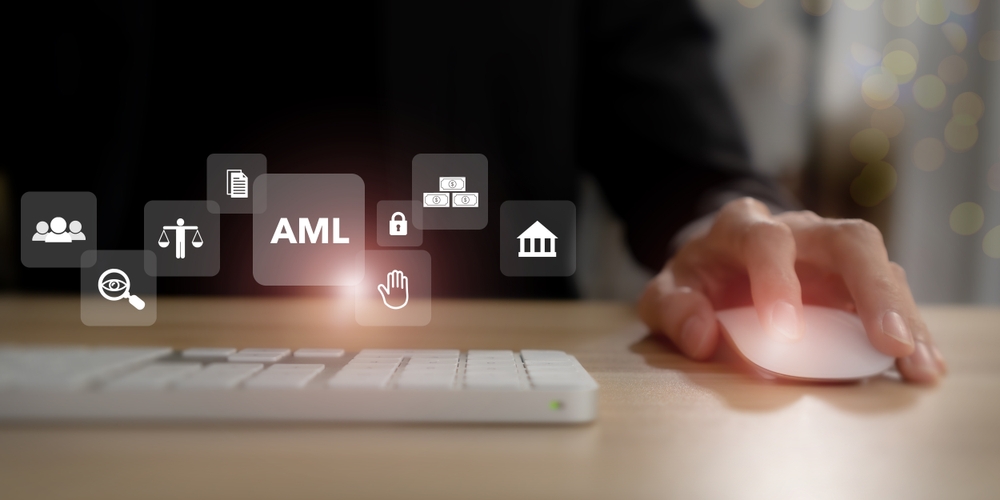In the high-stakes world of finance, the battle against money laundering and financial crimes is relentless. For businesses, the threat of illicit activities isn’t just a regulatory concern—it’s a significant risk to their reputation and bottom line. Anti-Money Laundering (AML) monitoring tools are advanced solutions transforming how companies safeguard their operations. Leveraging cutting-edge technologies, these tools ensure compliance, bolster security, and streamline processes, making them essential in today’s complex financial landscape. In this article, we’ll explore the capabilities of AML monitoring tools, their key features, and the profound benefits they bring, backed by real-world applications and success stories.
Understanding AML Monitoring Tools
AML monitoring tools are sophisticated software solutions designed to detect and prevent money laundering activities. They analyze vast amounts of data in real-time, identify suspicious transactions, and generate alerts for further investigation. By automating these processes, AML monitoring tools help businesses comply with regulatory requirements and protect themselves from financial crime risks.
Why AML Monitoring Tools Are Crucial
Regulatory Compliance
Regulatory bodies worldwide have stringent AML regulations that businesses must adhere to. Non-compliance can result in hefty fines, legal consequences, and reputational damage. AML monitoring tools ensure that businesses stay compliant by continuously monitoring transactions and identifying any deviations from regulatory norms.
Fraud Detection and Prevention
Money laundering and fraud are sophisticated crimes that evolve continuously. AML monitoring tools use advanced algorithms and machine learning to detect unusual patterns and behaviors, making it difficult for criminals to exploit financial systems.
Operational Efficiency
Manual monitoring of transactions is time-consuming and prone to errors. AML monitoring tools automate these processes, reducing the workload on compliance teams and allowing them to focus on more strategic tasks.
Key Features of AML Monitoring Tools
Real-Time Transaction Monitoring
AML monitoring tools analyze transactions in real-time, flagging suspicious activities as they occur. This immediate response capability is crucial for preventing potential financial crimes.
Advanced Analytics and Machine Learning
These tools use advanced analytics and machine learning algorithms to identify patterns indicative of money laundering. They can learn from historical data, continuously improving their accuracy in detecting suspicious activities.
Comprehensive Reporting and Alerts
AML monitoring tools generate detailed reports and alerts for compliance officers. These reports include information on flagged transactions, reasons for alerts, and recommended actions, facilitating efficient investigations.
Customer Risk Scoring
By assessing various risk factors, AML monitoring tools assign risk scores to customers. This helps businesses prioritize high-risk customers for enhanced due diligence, ensuring a proactive approach to compliance.
Integration with Existing Systems
Effective AML monitoring tools integrate seamlessly with existing business systems, such as Customer Relationship Management (CRM) and Enterprise Resource Planning (ERP) systems. This integration ensures that all relevant data is analyzed, and no suspicious activity goes unnoticed.
Benefits of Using AML Monitoring Tools
Enhanced Security
AML monitoring tools provide a robust security framework by continuously monitoring transactions and identifying potential threats. This proactive approach minimizes the risk of financial crimes.
Improved Compliance
These tools help businesses comply with AML regulations by ensuring that all transactions are monitored and any suspicious activities are reported promptly. This reduces the risk of non-compliance and associated penalties.
Cost Savings
Automating the monitoring process reduces the need for extensive manual labor, resulting in significant cost savings. Compliance teams can allocate their resources more efficiently, focusing on strategic initiatives rather than routine monitoring tasks.
Better Customer Insights
AML monitoring tools provide valuable insights into customer behaviors and transaction patterns. This information can be used to tailor services, improve customer experience, and enhance overall business strategies.
Scalability
As businesses grow, so do their compliance needs. AML monitoring tools are scalable, capable of handling increasing transaction volumes and evolving regulatory requirements without compromising efficiency.
Case Study: A Mid-Sized Bank’s Journey with AML Monitoring Tools
Background: A mid-sized bank was struggling with manual transaction monitoring, leading to delayed responses to suspicious activities and regulatory pressures.
Challenge: The bank needed a solution that could enhance their AML compliance, reduce manual workload, and provide real-time insights into transactions.
Solution: The bank implemented an advanced AML monitoring tool with real-time transaction monitoring, machine learning capabilities, and comprehensive reporting features.
Results:
- Enhanced Compliance: The bank’s compliance rate improved significantly, with all suspicious transactions being flagged and investigated promptly.
- Reduced Workload: Manual monitoring efforts were reduced by 70%, allowing the compliance team to focus on strategic initiatives.
- Cost Efficiency: The automation led to a 40% reduction in compliance-related costs.
- Improved Security: The bank experienced a notable decrease in fraudulent activities, bolstering its reputation for security and trustworthiness.
Implementing AML Monitoring Tools: Best Practices
Assess Your Needs
Understand your specific compliance requirements and choose an AML monitoring tool that aligns with your business goals and regulatory obligations.
Ensure Comprehensive Integration
Choose a tool that integrates seamlessly with your existing systems, ensuring a holistic approach to transaction monitoring and data analysis.
Train Your Team
Provide thorough training for your compliance team to ensure they can effectively use the AML monitoring tool and respond to alerts and reports.
Continuously Update Your Systems
Regularly update your AML monitoring tools to incorporate the latest advancements in technology and regulatory changes. This ensures your system remains effective against evolving financial crime tactics.
Monitor and Optimize
Continuously monitor the performance of your AML monitoring tools and make necessary adjustments to optimize their effectiveness. Collect feedback from your team and address any issues promptly.
Future Trends in AML Monitoring Tools
Artificial Intelligence and Machine Learning
The integration of AI and machine learning in AML monitoring tools will continue to evolve, offering even more sophisticated pattern recognition and predictive analytics capabilities.
Blockchain Technology
Blockchain can provide enhanced transparency and traceability in transactions, making it a valuable addition to AML monitoring tools.
Cloud-Based Solutions
Cloud-based AML monitoring tools offer scalability, flexibility, and cost-effectiveness, making them an attractive option for businesses of all sizes.
AML monitoring tools are indispensable for businesses aiming to stay compliant, secure, and efficient in the face of growing financial crime threats. By leveraging advanced technologies such as real-time monitoring, machine learning, and comprehensive reporting, these tools offer robust solutions to complex compliance challenges. Implementing the right AML monitoring tools can transform your compliance operations, enhance security, and provide valuable insights into your customer behaviors and transaction patterns.
Ready to enhance your AML compliance strategy? Explore iComply’s state-of-the-art AML monitoring tools today. Our platform offers seamless integration, cutting-edge security features, and customizable compliance solutions tailored to your business needs. Contact us now to learn more and schedule a demo.
Stay ahead of financial crimes and ensure regulatory compliance with iComply—your trusted partner in AML monitoring.













